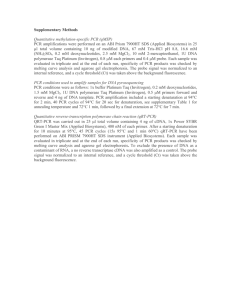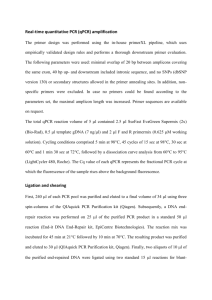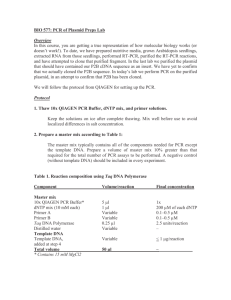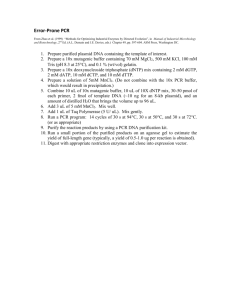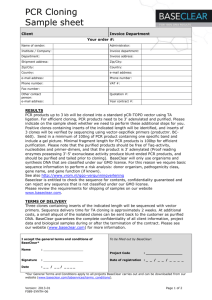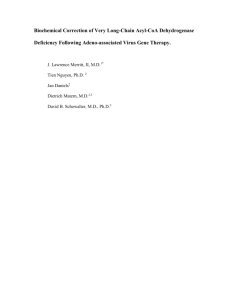Supplementary Methods
advertisement
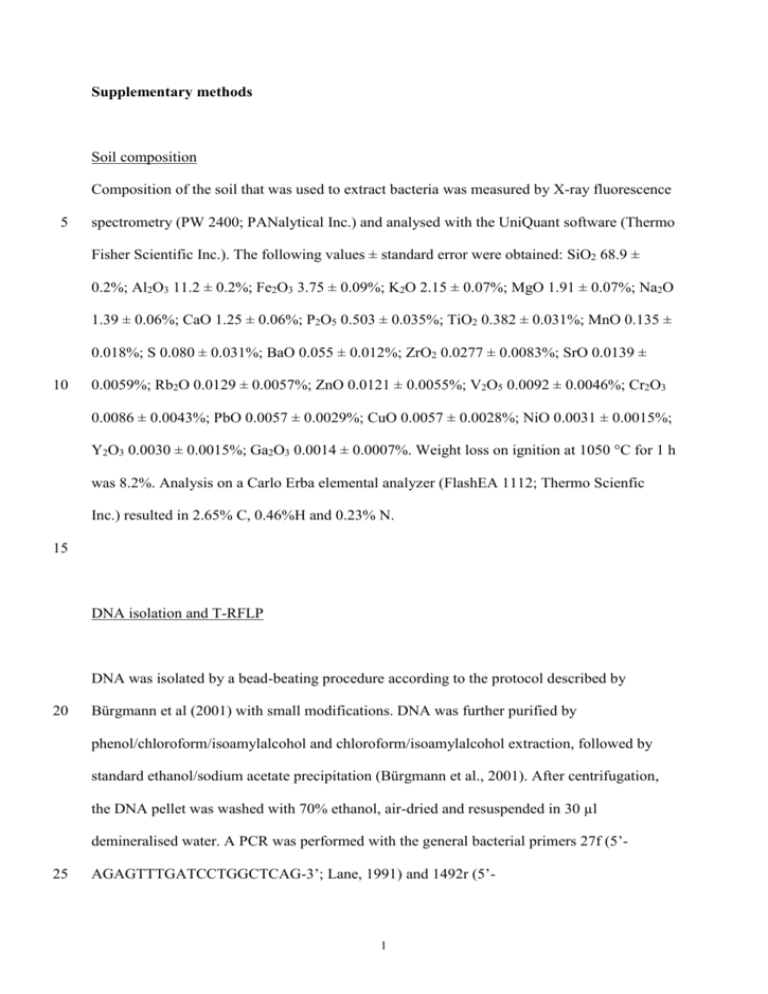
Supplementary methods Soil composition Composition of the soil that was used to extract bacteria was measured by X-ray fluorescence 5 spectrometry (PW 2400; PANalytical Inc.) and analysed with the UniQuant software (Thermo Fisher Scientific Inc.). The following values ± standard error were obtained: SiO2 68.9 ± 0.2%; Al2O3 11.2 ± 0.2%; Fe2O3 3.75 ± 0.09%; K2O 2.15 ± 0.07%; MgO 1.91 ± 0.07%; Na2O 1.39 ± 0.06%; CaO 1.25 ± 0.06%; P2O5 0.503 ± 0.035%; TiO2 0.382 ± 0.031%; MnO 0.135 ± 0.018%; S 0.080 ± 0.031%; BaO 0.055 ± 0.012%; ZrO2 0.0277 ± 0.0083%; SrO 0.0139 ± 10 0.0059%; Rb2O 0.0129 ± 0.0057%; ZnO 0.0121 ± 0.0055%; V2O5 0.0092 ± 0.0046%; Cr2O3 0.0086 ± 0.0043%; PbO 0.0057 ± 0.0029%; CuO 0.0057 ± 0.0028%; NiO 0.0031 ± 0.0015%; Y2O3 0.0030 ± 0.0015%; Ga2O3 0.0014 ± 0.0007%. Weight loss on ignition at 1050 °C for 1 h was 8.2%. Analysis on a Carlo Erba elemental analyzer (FlashEA 1112; Thermo Scienfic Inc.) resulted in 2.65% C, 0.46%H and 0.23% N. 15 DNA isolation and T-RFLP DNA was isolated by a bead-beating procedure according to the protocol described by 20 Bürgmann et al (2001) with small modifications. DNA was further purified by phenol/chloroform/isoamylalcohol and chloroform/isoamylalcohol extraction, followed by standard ethanol/sodium acetate precipitation (Bürgmann et al., 2001). After centrifugation, the DNA pellet was washed with 70% ethanol, air-dried and resuspended in 30 µl demineralised water. A PCR was performed with the general bacterial primers 27f (5’- 25 AGAGTTTGATCCTGGCTCAG-3’; Lane, 1991) and 1492r (5’- 1 GGTTACCTTGTTACGACTT-3’; Lane, 1991), of which primer 27f was labelled with hexachloro-6-carboxyfluorescein. The PCR mixture contained 0.2 μM of each primer and 40 ng of DNA in a total volume of 100 µl (HotStar Taq Master Mix Kit, Qiagen). The PCR cycling regime was (1) one cycle of 15 min denaturation and Taq activation at 95 °C, (2) 30 30 cycles, of each 60 s at 95 °C, 45 s at 50 °C, and 90 s at 72 °C, and (3) one final extension cycle of 10 min at 72 °C. A small quantity of PCR products was verified by standard agarose gel electrophoresis, the rest purified and concentrated in 30 µl demineralised water using a Qiaquick PCR purification kit (Qiagen). DNA concentrations were determined by Picogreen quantification following instructions of the supplier (Invitrogen, Carlsbad, CA, USA). A 35 quantity of 500 ng of DNA was digested with HaeIII for 3 h. A volume of 1 μl of digested product was mixed with 0.3 μl of ROX-500 size standard (Applied Biosystems, Foster City, CA, USA) and 13.8 μl of Hi-Di formamide (Applied Biosystems), and separated on an ABI 3100 Genetic Analyzer (Applied Biosystems), using an injection time of 22 s at 1 kV. 40 Clone libraries 16S rRNA gene fragments were amplified from eight gene pools of Experiment B in a PCR using primers 27f and 534r (5’-ATTACCGCGGCTGCTGG-3’; Muyzer et al, 1993), while 45 maintaining the same amplification conditions as described above. A small fraction of each PCR was verified by agarose gel electrophoresis, after which the remainder was purified and concentrated. PCR fragments were ligated into pGEM-T Easy (Promega, Madison, WI, USA), and the pool of vector-insert ligations was transformed into competent Escherichia coli DH5α cells (OneShot®MaxEfficiency; Invitrogen) according to the manufacturer’s 50 instructions. Transformants were plated on Luria Broth supplemented with 100 µg per ml 2 ampicillin, 0.5 mM IPTG and 80 μg per ml 5-bromo-4-chloro-3-indolyl-β-D-galactoside. Plasmids were isolated from single white colonies with the Montage Plasmid Miniprep 96 kit (Millipore). 16S rRNA gene inserts were directly sequenced on purified plasmid DNA using the BigDye Terminator v3.1 kit (Applied Biosystems) and plasmid-specific primer T7. For 55 each library, 48 clones were sequenced. In case the sequence quality was low or chimeric sequences were detected (using the program Chimera Detection, RDP8.1, http://rdp8.cme.msu.edu/cgis/chimera.cgi?su=SSU, followed by an individual check of suspected sequences), additional clones were sequenced until a total of 48 sequences per library were obtained. 60 Supplementary figure 1 Relative peak heights of T-RFs from bacterial communities in a) experiment A, and b) experiment C. Black bars, non-attached communities; white bars, hyphae-attached communities; hatched bars, attached and non-attached to glass wool. 3

